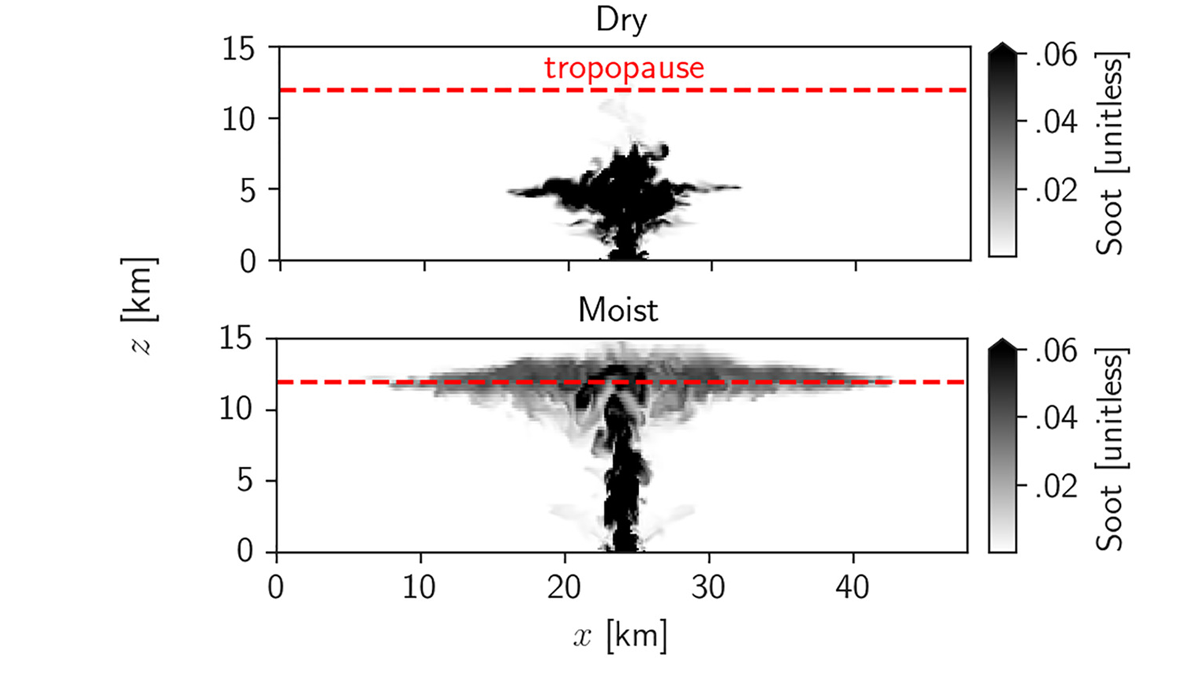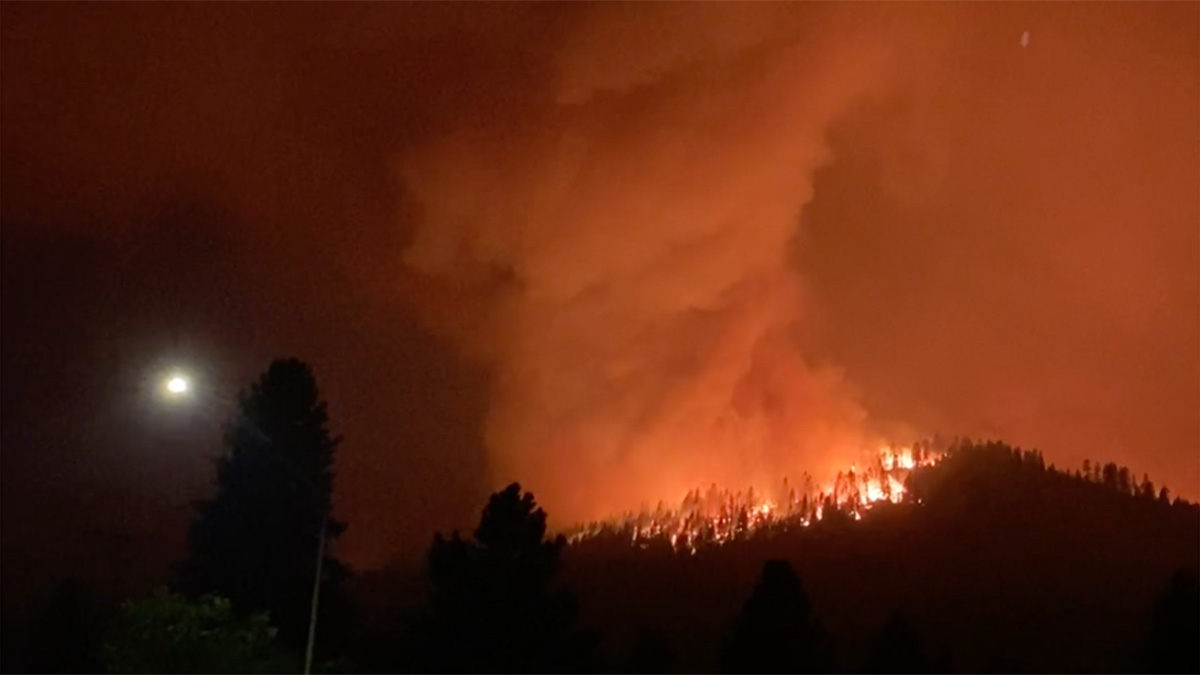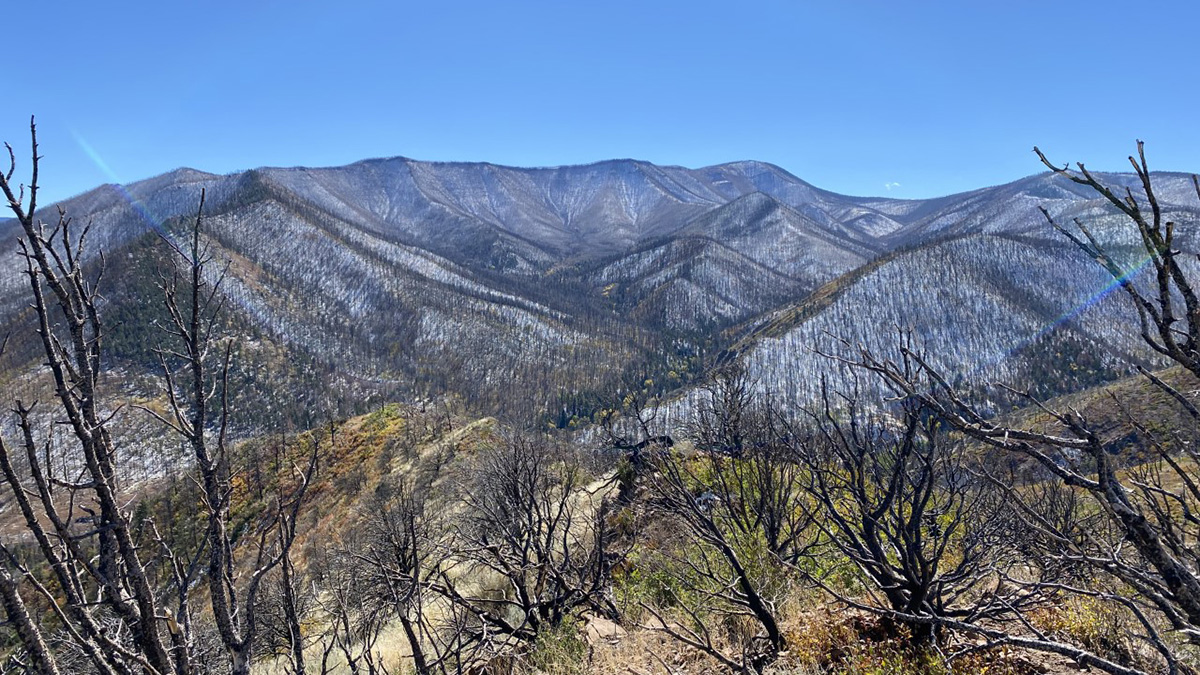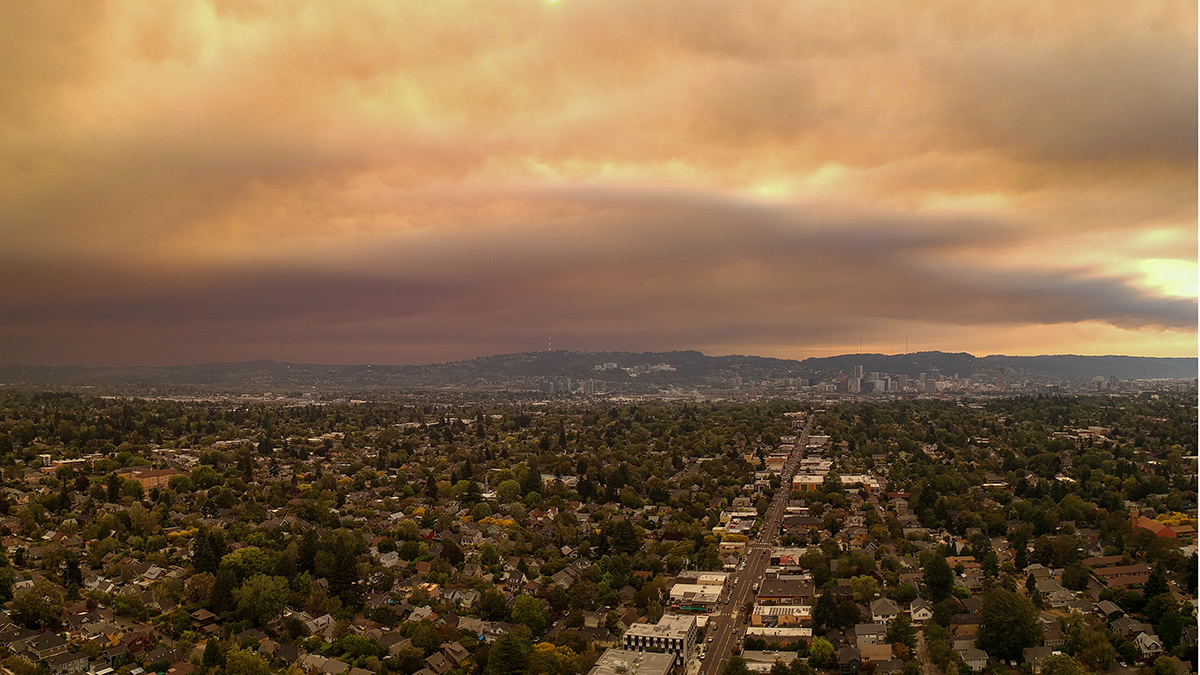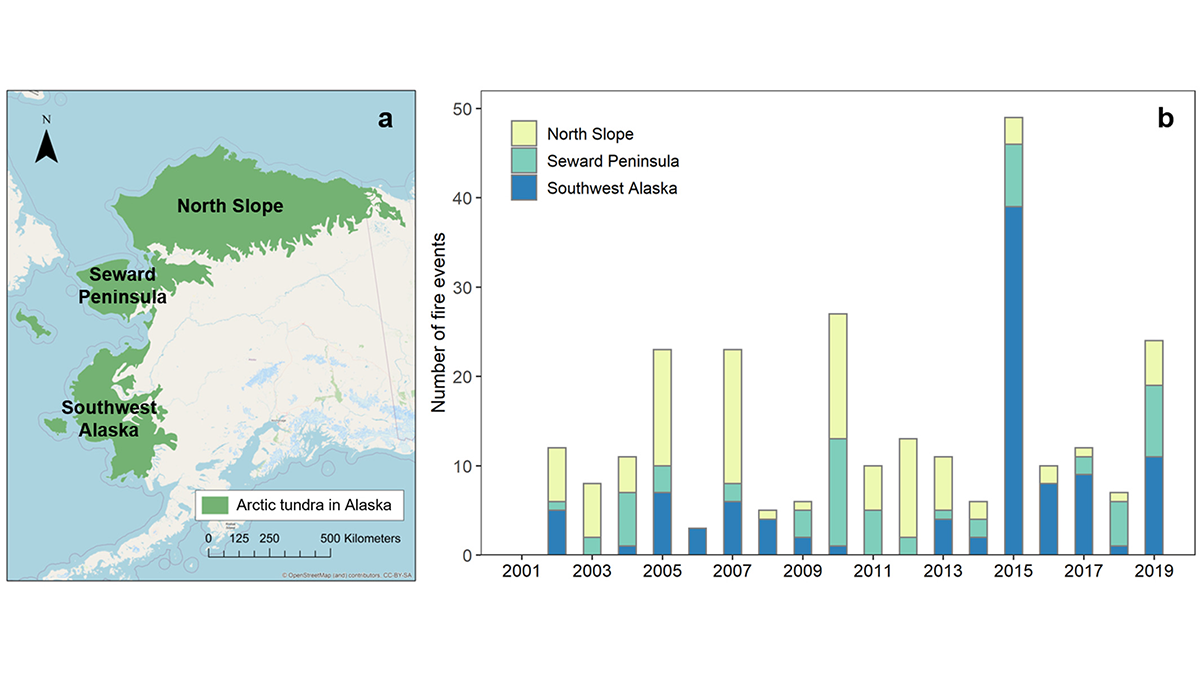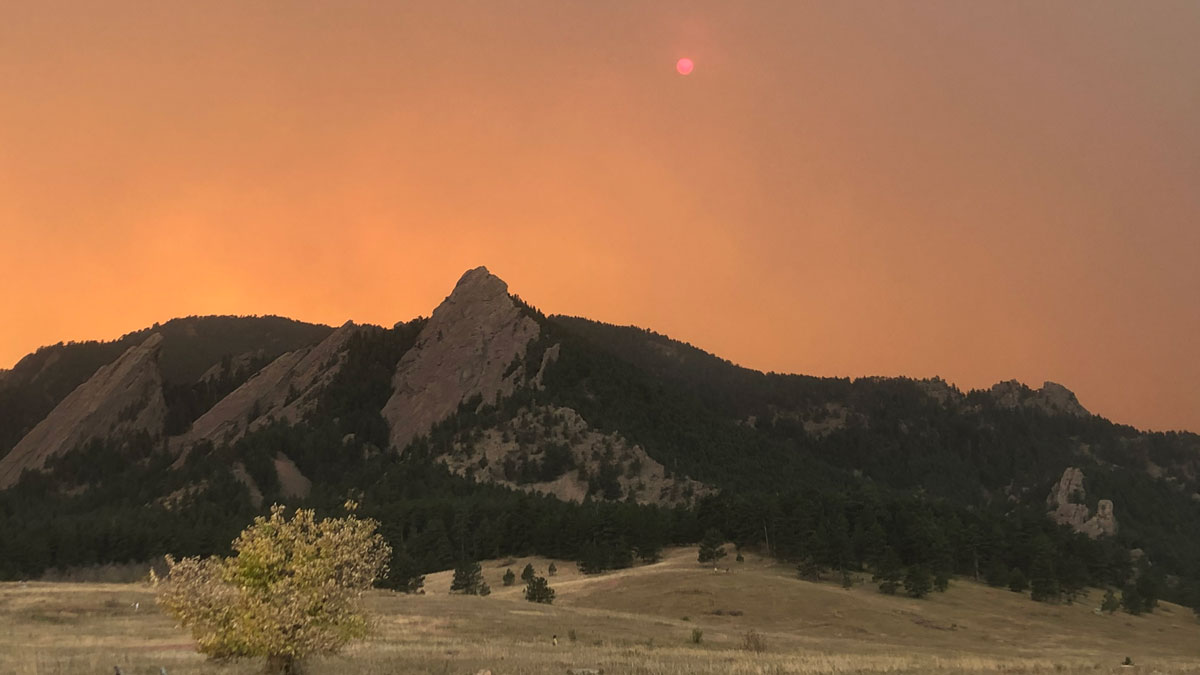A new study shows how moist convection can lift sooty air from firestorms to the stratosphere, potentially leading to a nuclear winter.
wildfires
The Burning Tundra
As wildfires blaze through the Arctic, scientists examine the role of landscape characteristics on wildfire ecosystem responses in northern aquatic ecosystems.
Chasing Fire Tornadoes for Science
Recent research suggests fire-generated vortices are always present during wildfires.
How Wildfires Affect Snow in the American West
Data from 45 burned sites help researchers better understand climate change and wildfires’ impact on snowpack.
El aire nocivo a la salud podría volverse rutinario en el Pacífico Noroeste
Si el mundo continúa utilizando combustibles fósiles, la contaminación por partículas finas derivadas del humo de incendios podría duplicarse de finales de verano a inicios de otoño en el área del Pacífico Noroeste en los EE.UU. para el año 2100.
A Spike in Wildfires Contributed to the End-Permian Extinction
An upward trend in fossilized charcoal indicates that wildfires may have contributed to extinctions during the Great Dying.
Lightning in Alaskan Tundra Ignites Most Fires
Cloud-to-ground lightning is found to be the most important controller of wildfire occurrence in the Artic tundra of Alaska from 2001 to 2019.
For Western Wildfires, the Immediate Past Is Prologue
A new machine learning approach trained on winter and spring climate conditions offers improved forecasts of summer fire activity across the western United States.
How Can Silicone Wristbands Help Firefighters?
Scientists are making strides in monitoring firefighters for pollutant exposure using silicone wristbands, which will become even more important as wildfires encroach on the built environment.
The Sun Bakes Wildfire Smoke, Changing Its Toxicity
A new study questions the narrative that dilution is the solution to pollution.

